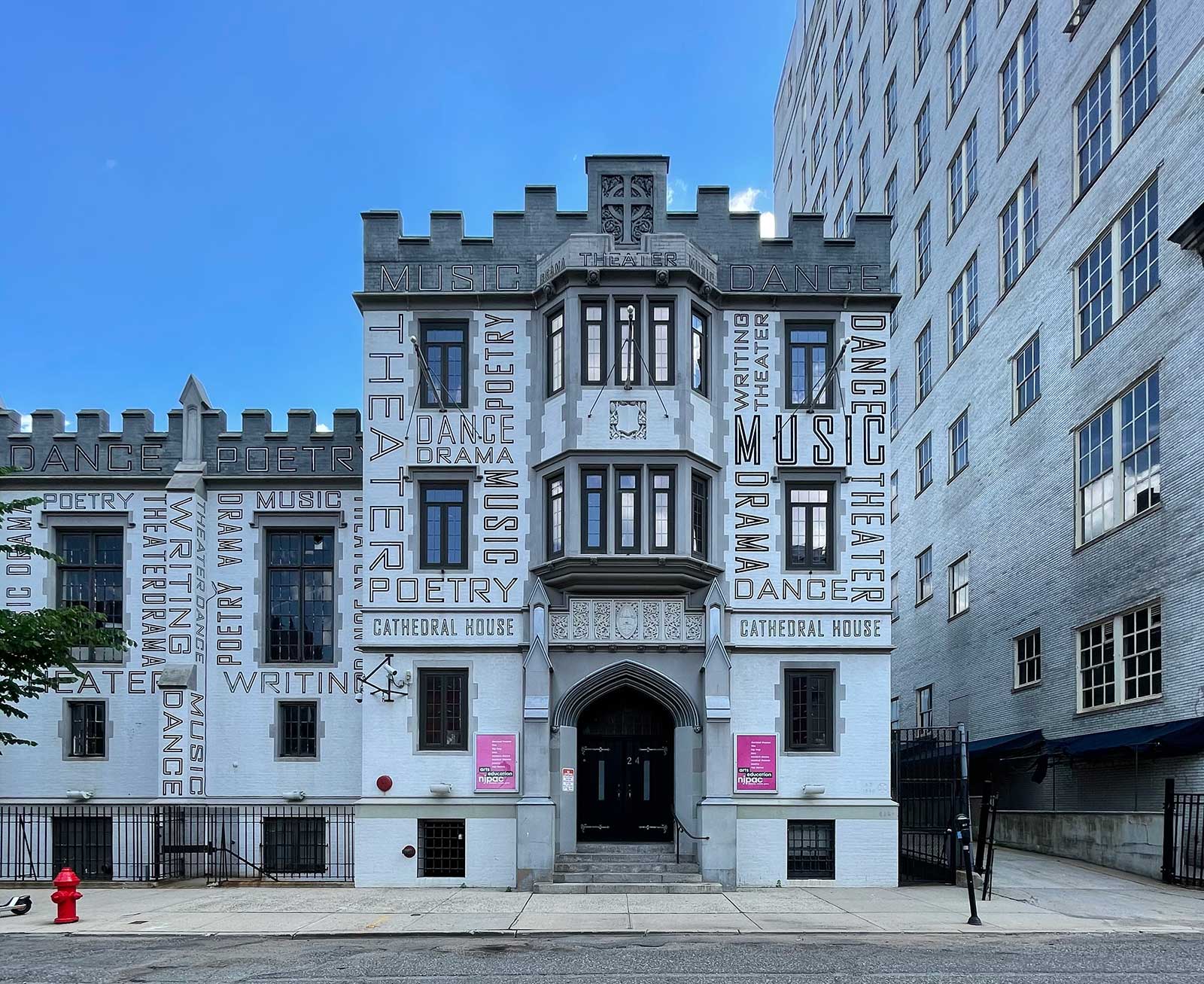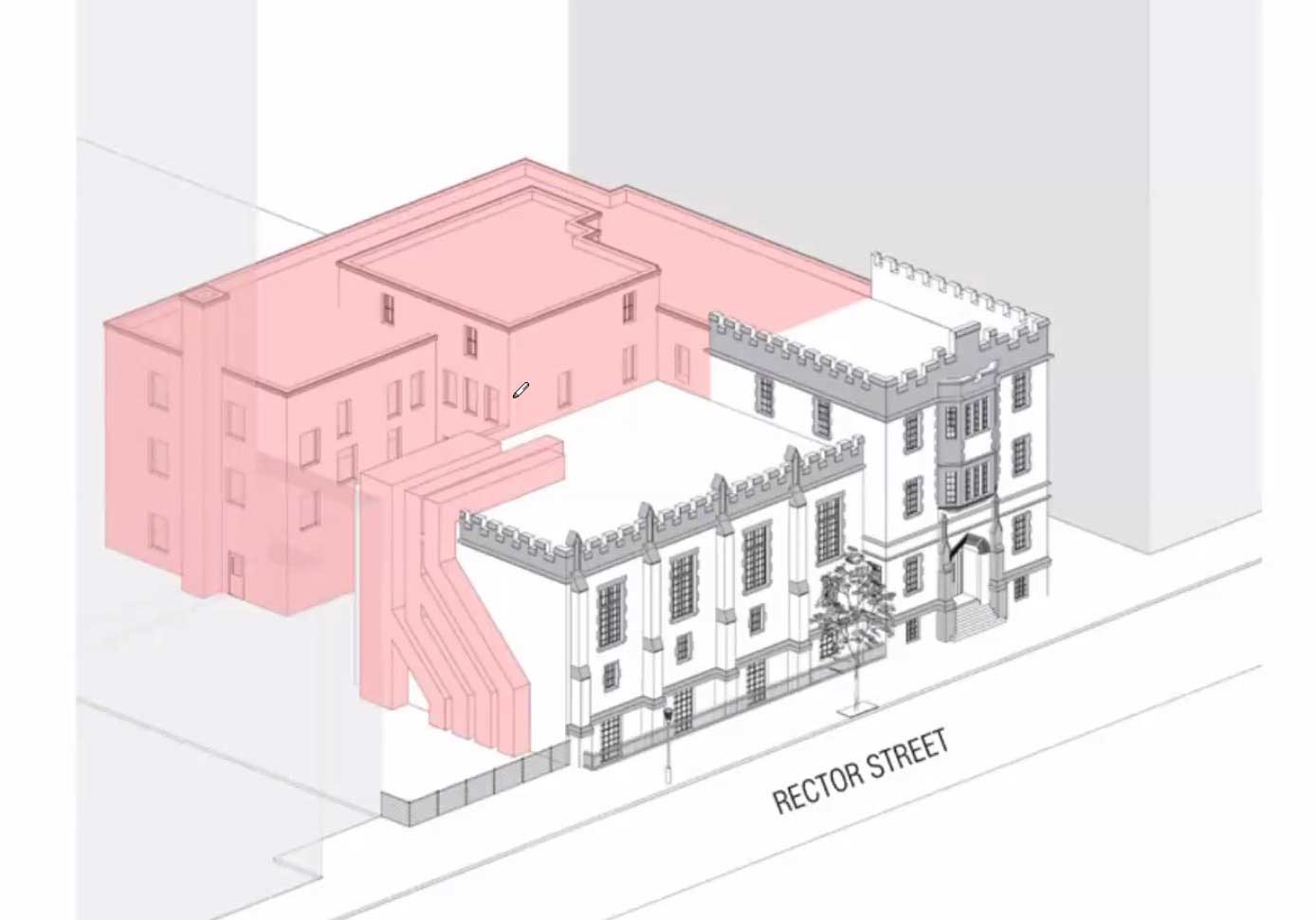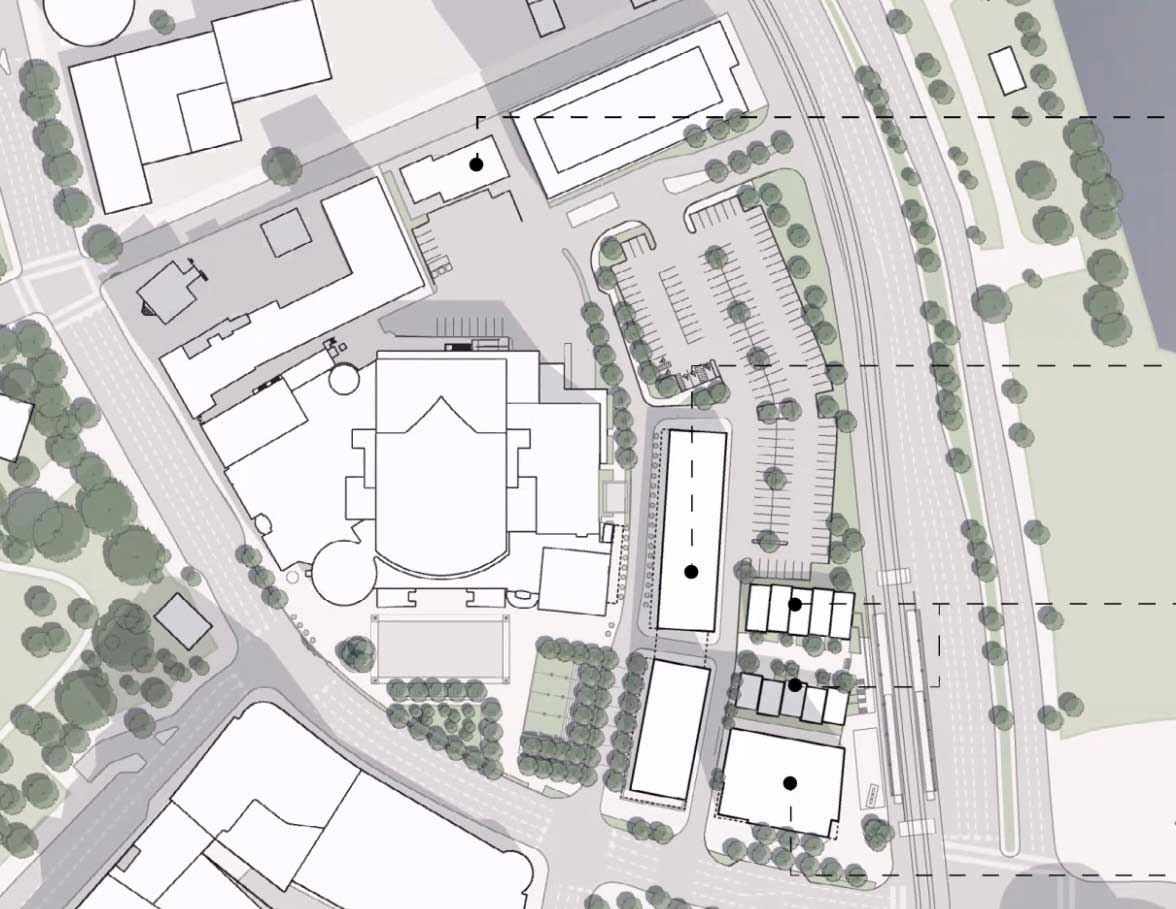
Facing backlash over a plan to demolish a Newark landmark that played a role in black history, NJPAC revealed a modified redevelopment plan that would preserve a significant portion of the building at 24 Rector Street, including the street-facing facade and a well-known mural.
The concession to save a street-facing section of the Cathedral House was favorably met this week by Newark’s historic preservation commission, who voted 6-1, allowing the arts organization to proceed with its multi-million dollar plan that will add residential units, ground-floor retail, and a pedestrian-friendly street grid to its eight-acre campus.

“By preserving this whole front building, I personally feel you’ve gone all the way with this,” said HPC Chairman Richard Partyka. “You found a way to make what you needed happen and still give us this historic building.”
The opposition to NJPAC’s initial plans presented in June — to completely demolish the Cathedral House — protested the threat to the Military Park Historic District. In the 1990s, the construction of the downtown arts institution required the demolition of five buildings, notably the Military Park Hotel. Community leaders and historians reminded the applicants of the signed agreement they had made in 1993 to preserve the Cathedral House.

As a condition of the HPC’s approval on Monday, the commissioners required that the arts institution sign a renewed agreement to preserve the Cathedral House. “In the interest of preserving not only the building itself but the understanding that this building is important to the history of the city and also to African-American history, we would need to require that agreement,” said Commissioner Susana Holguin-Veras.
Mayor Ras Baraka submitted a letter to the HPC in support of the partial demolition of Cathedral House and shared a personal connection to the building. “My father was one of the thought-leaders who convened the Conference, which was all the more significant as it was held in the days following the Newark Rebellion.” In 1967, with racial tensions high, Newark became the host city for the National Black Power Conference and the Cathedral House was used as one of the venues.
The preservation community in Newark has been on edge for the past few months. The NJPAC application was only one of two controversial applications involving demolition within a historic district. Many thought Baraka, who has raised doubts about his commitment to protecting local landmarks — the Kastner Mansion and the Essex County Jail, for instance — might use his power to undermine the HPC’s authority, as preservationists criticized him for in the case of the proposed Harriet Tubman monument.
The Tubman monument, which will replace a statue of Christopher Columbus within the James Street Commons Historic District, was required to appear before the local historic preservation commission. However, the demolition still proceeded without the HPC’s required approval, violating the city ordinance and opening the city up to legal action.
Following Monday’s approval, Alex Merlucci, associate partner at Inglese Architecture + Engineering, revealed NJPAC’s updated redevelopment plans. A solution was presented to the loading bay issues that were mentioned at the last meeting. A through-street will soon connect Mulberry Street to Rector Street. Construction is set to begin next year, Merlucci said.


